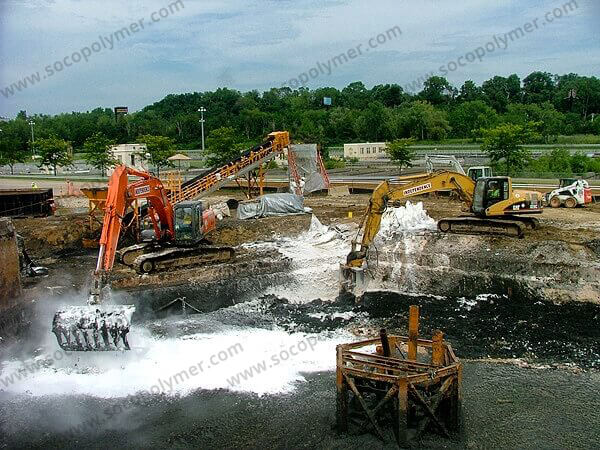Sodium polyacrylate, a highly functional polymer material, has found its way into various industries, playing a pivotal role in enhancing production processes and product quality. Its unique properties make it an indispensable additive in numerous applications.
In the petroleum industry, sodium polyacrylate holds a crucial position as a thickening agent and fluid loss control additive in drilling mud. Its polymeric chain structure effectively boosts the viscosity of the mud, thereby enhancing its suspension capacity and ability to carry rock debris. Additionally, it reduces fluid loss, preventing the collapse of the strata and instability of the wellbore. These characteristics render sodium polyacrylate an indispensable component in oil drilling operations.
In the field of water treatment, sodium polyacrylate is used for sludge treatment and river dredging. It can absorb sludge and water in rivers, making it easier to clean and transport, reducing cleaning and transport costs, and promoting the formation of larger floc masses for more effective settlement and filtration. In addition, sodium polyacrylate absorbs sludge and excess water in rivers, reducing liquid waste disposal costs. Therefore, sodium polyacrylate has broad application prospects in sludge treatment and river dredging.

In the papermaking industry, sodium polyacrylate acts as a reinforcing agent and retention aid. It forms hydrogen bonds with paper fibers, strengthening the bonds between them and enhancing the paper's durability and water resistance. Additionally, sodium polyacrylate reduces fiber loss during production, improving paper retention rates. These attributes position sodium polyacrylate as a vital additive in the papermaking process.
In the textile industry, sodium polyacrylate finds its use as a sizing agent and dyeing auxiliary. As a sizing agent, it enhances the strength and abrasion resistance of yarns, improving their processability. As a dyeing auxiliary, sodium polyacrylate boosts the adsorption and color fastness of dyes on fibers, enhancing the overall dyeing effect. Furthermore, it improves the fabric's moisture absorption, softness, and wearer comfort.

In the cosmetics industry, sodium polyacrylate serves as a thickening agent, stabilizer, and suspending agent. Its polymeric chain structure effectively increases the viscosity of cosmetics, enhancing their spreadability and application. Additionally, it improves the stability of cosmetic products, preventing separation and sedimentation. Sodium polyacrylate also suspends solid particles in cosmetics, ensuring their uniform distribution and improving the overall product performance.
Beyond these specific industries, sodium polyacrylate finds its applications in diverse fields. In agriculture, it serves as a soil conditioner, enhancing soil water retention and permeability. In environmental protection, it is used for wastewater treatment and landfill liners. In medicine, sodium polyacrylate finds its use as a drug carrier and in the preparation of biomaterials.
In conclusion, sodium polyacrylate, with its diverse applications across various industries, has become a crucial component in enhancing production processes and product quality. Its unique properties and functionalities make it a highly sought-after material, paving the way for further innovations and advancements in numerous fields.